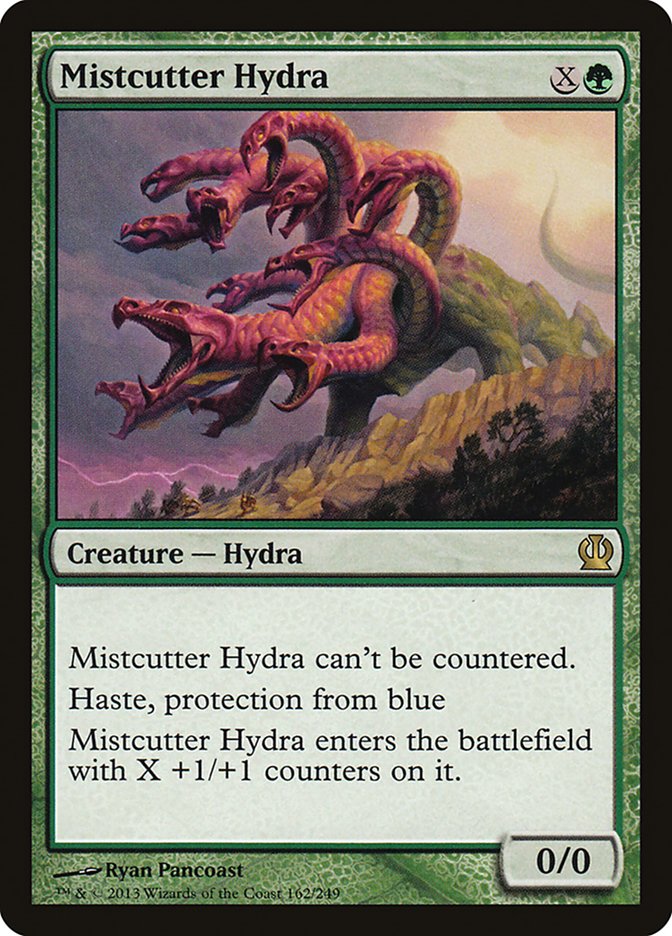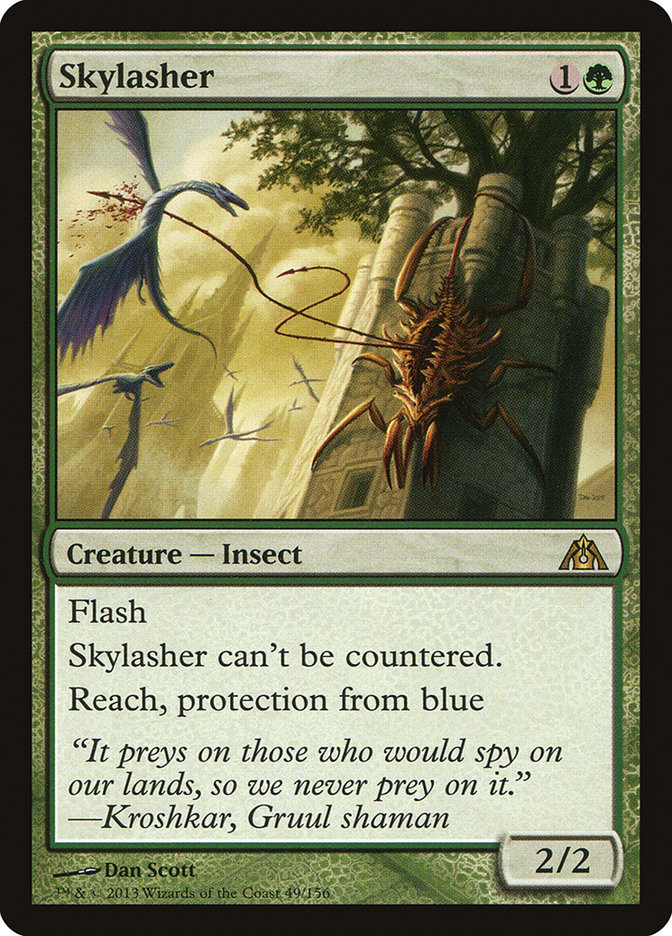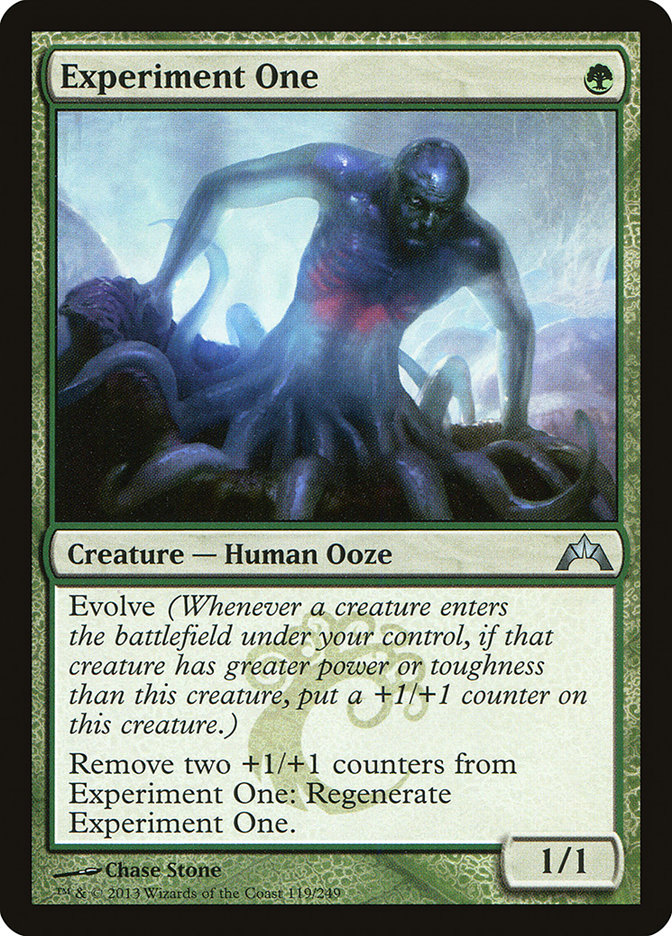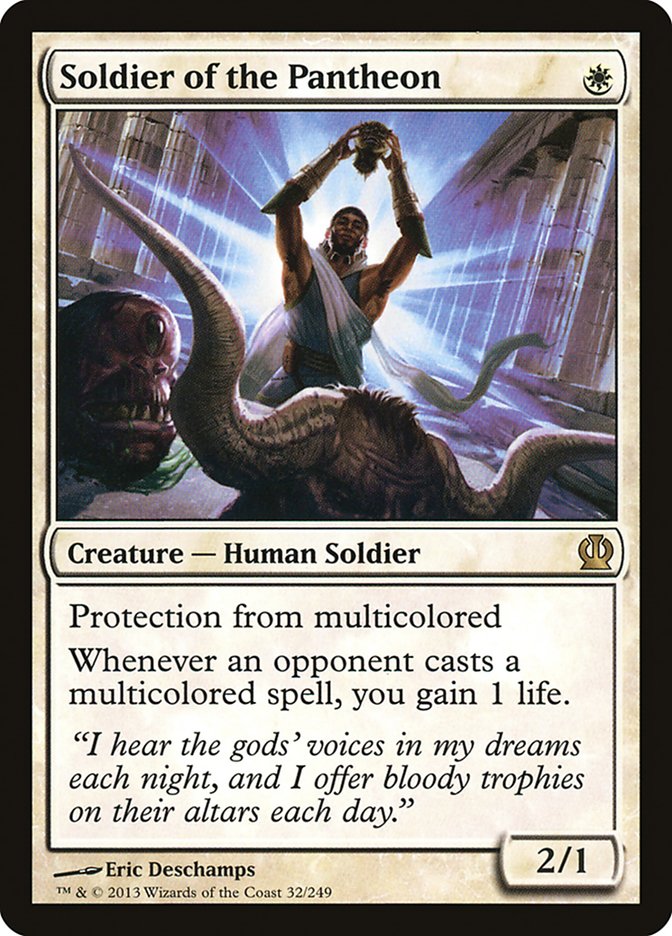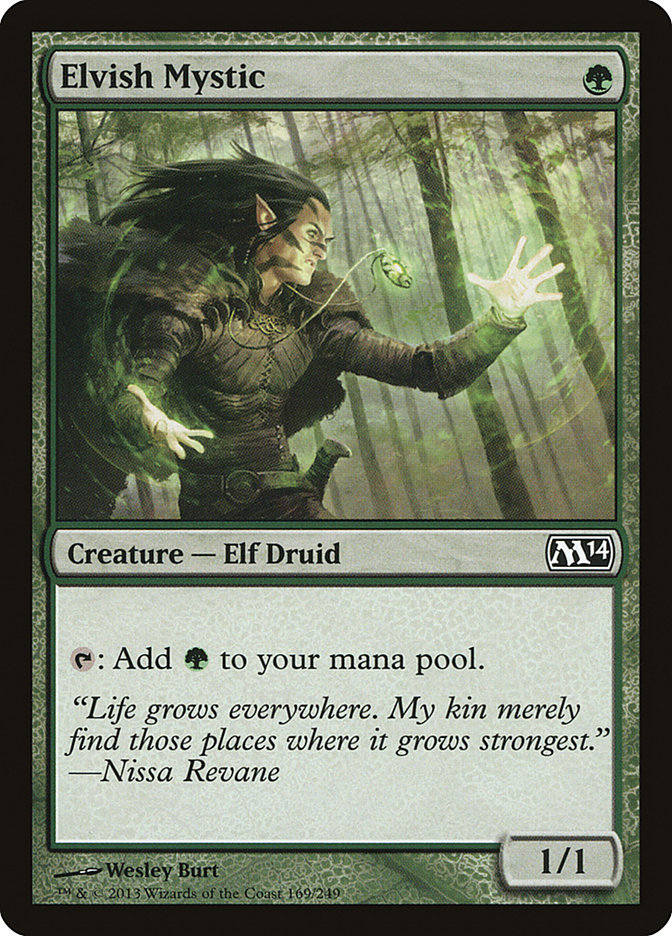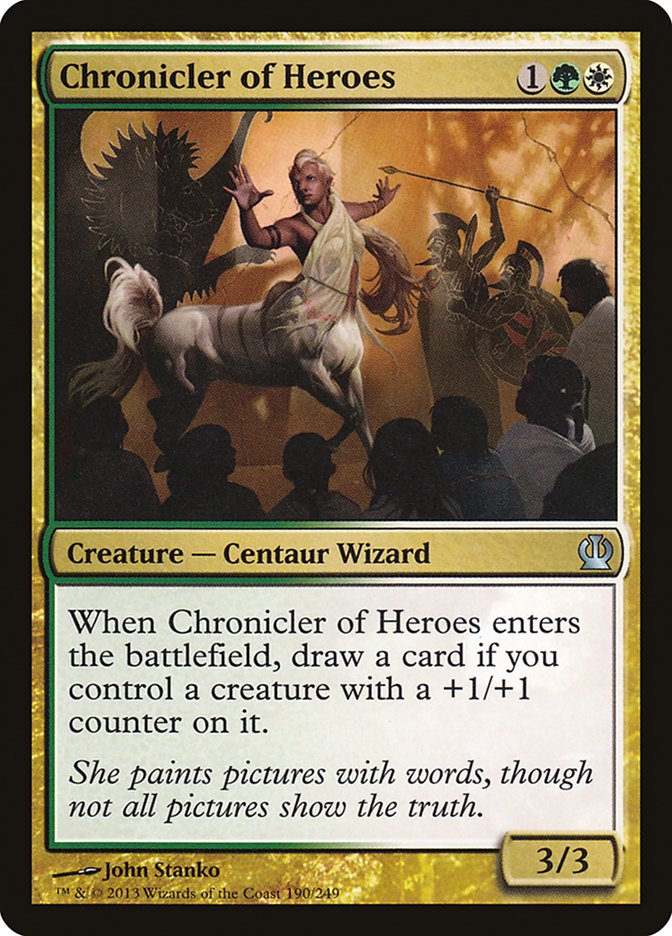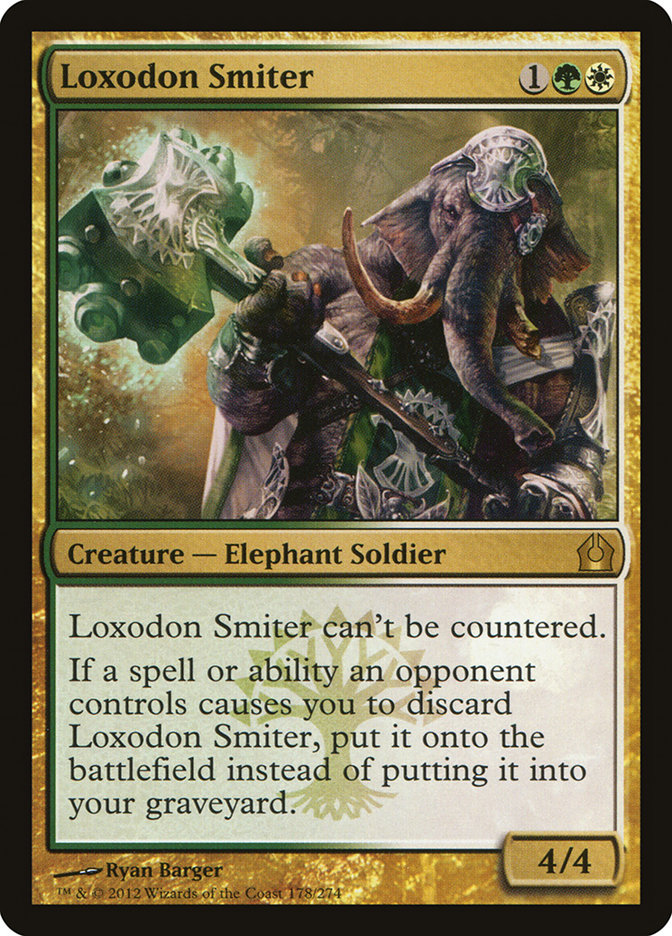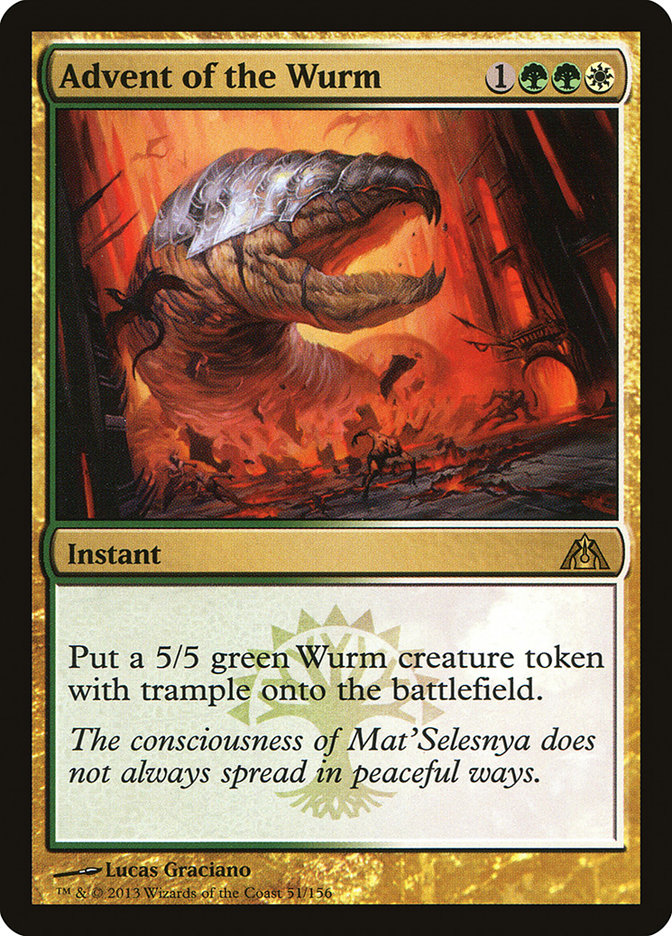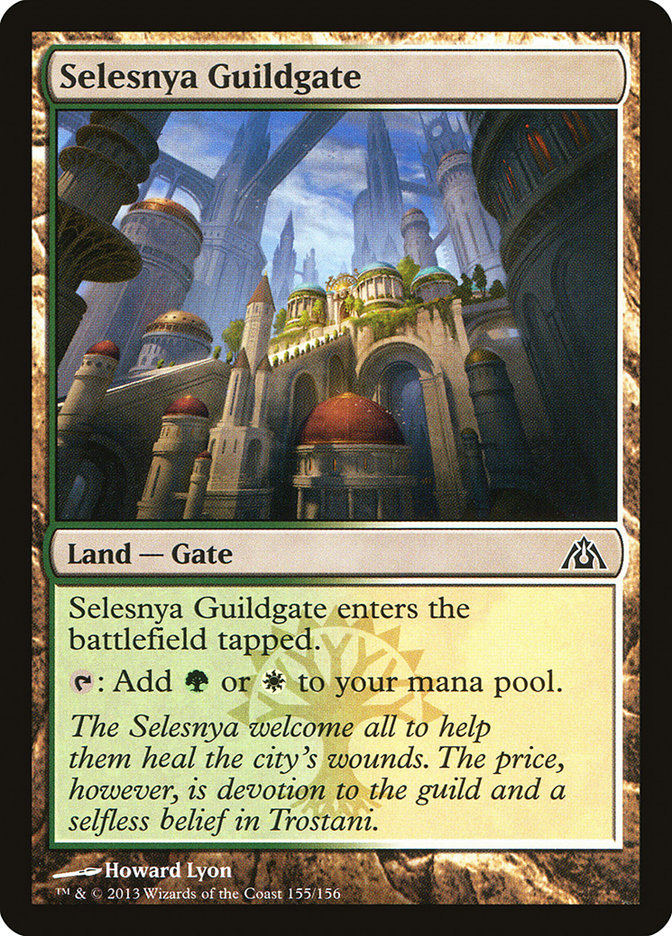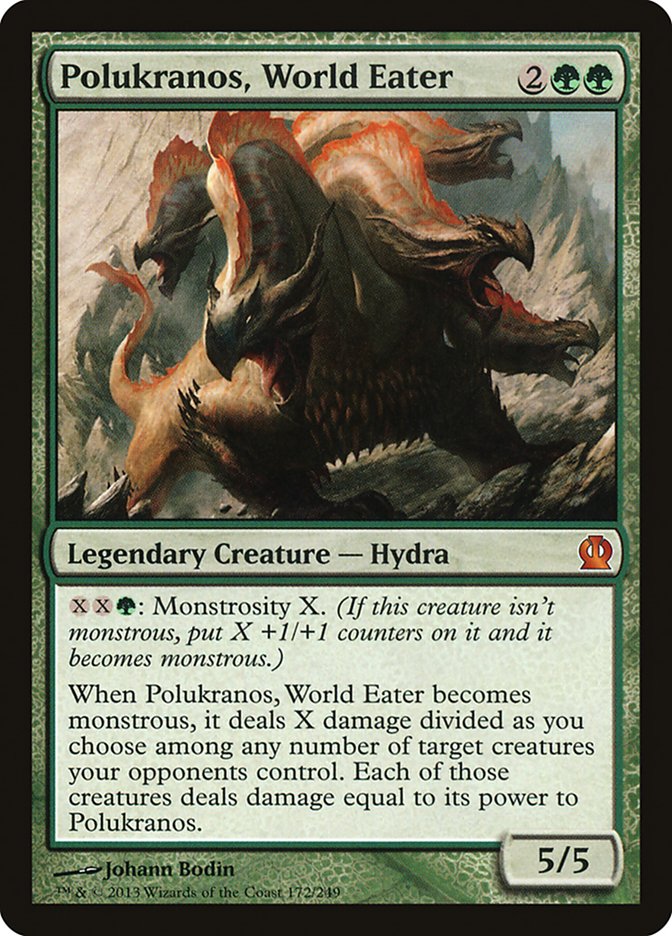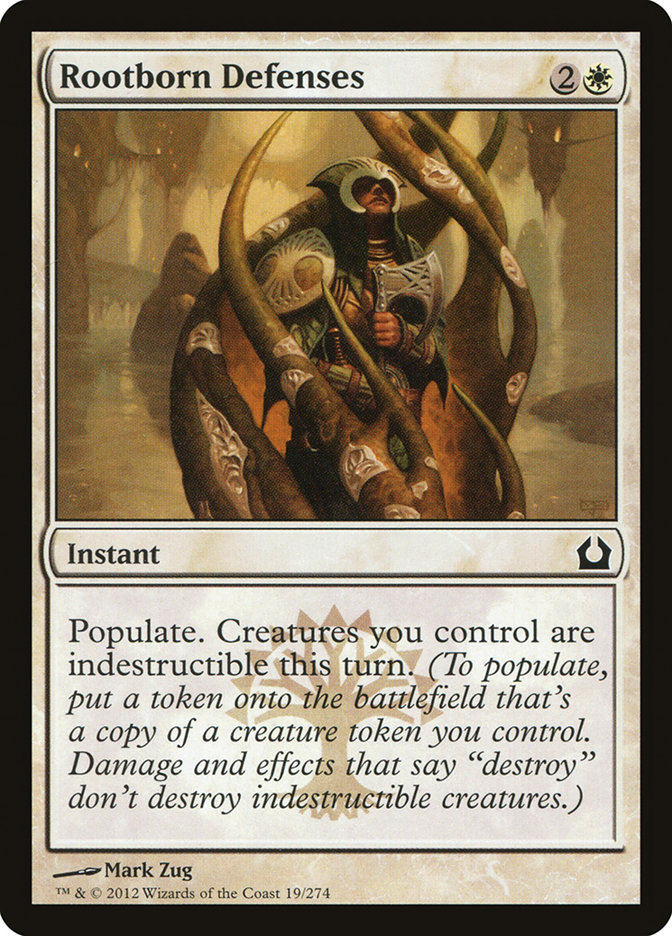Hello world!
It’s been a minute since I’ve graced these pages, so let me reintroduce myself. My name is Andrew Shrout. Up until last year, I was known to Magic players almost exclusively as prolific Magic Online grinder JohnnyHotSauce, but 2013 treated my rather well in the real world. You may have spotted me in the Top 8 of Pro Tour Dragon’s Maze in San Diego or more recently in the Top 4 of the StarCityGames.com Invitational in Las Vegas. I resolved to make an even better run in 2014, and so far I’m on pace, finishing in second place at the Standard Open in Indianapolis this past weekend.
I didn’t have much trouble selecting which archetype to play for this tournament, as I had just come off of a strong finish in Vegas with a G/W Aggro deck designed by my teammate Craig Wescoe. I was happy with how the deck was positioned at that event, and it didn’t seem like there had been much of a shakeup over the holidays. Every deck is a work in progress, however, and I had a few ideas for how to tune the list.
This is the list I played in Indy:
Creatures (29)
- 4 Experiment One
- 4 Voice of Resurgence
- 2 Skylasher
- 4 Banisher Priest
- 4 Fleecemane Lion
- 4 Boon Satyr
- 4 Soldier of the Pantheon
- 3 Mistcutter Hydra
Lands (23)
Spells (8)

The Deck
Most of the buzz and kerfuffle about this deck at the Invitational centered rightfully on the package of creatures with protection from blue in the maindeck, but in the initial list that Wescoe showed me before the Invitational all of the Skylashers and most of the Mistcutter Hydras were relegated to the sideboard. It was actually just a lean aggro deck with a good curve and not much maindeck spice.
The full package of eight pro-blue creatures plus Unflinching Courages was in the sideboard though and was an exciting innovation that seemed like it would solve the Mono-Blue Devotion problem. We figured out fairly late that the pre-board matchup was still rough and the pro-blue plan was strong but still certainly surmountable with crafty play, so we made the choice to move all the Skylashers and Mistcutters to the main at the expense of some of the more generally powerful animals, notably Soldier of the Pantheon and Fleecemane Lion.
That configuration worked perfectly against Mono-Blue Devotion and against control decks, but other matchups, most notably Mono-Black Devotion, suddenly felt like much more of a miserable grind. For an Open field, I decided I needed to hedge a little. I moved two of the Skylashers and one of the Mistcutters to the board and cut some other maindeck cards like Last Breath and Elvish Mystic that had generally underperformed.
This gave me room to add back the full playsets of both Fleecemane Lion and Soldier of the Pantheon. These changes restored some of the goldfishability of the original build, which is crucial against Mono-Black Devotion since the deck’s only solution to Pack Rat is to keep attacking into it and try to punch through with combat tricks. In those games none of Soldier of the Pantheon’s text box is relevant, but just having a Savannah Lions on turn 1 makes a world of difference.
There shouldn’t be too much mystery surrounding the individual card choices in the maindeck. The deck is 23 lands and 37 threats, just as the savior intended. The Selesnya color combination doesn’t lack options when it comes to threat selection, however, so I’ll briefly go over why certain cards were chosen over others.
3 Mistcutter Hydra, 2 Skylasher
There’s a mono-blue deck, and these guys have protection from it. Why yes, I do think I’m pretty clever. Why do you ask?
Jokes aside, the big question a lot of people have when they first see the list is how much of a concession is really being made in other matchups in order to "pre-board" these trump threats. More specifically, how often do you lose a game against a nonblue deck because you draw these stinkers instead of something more broadly applicable?
The answer honestly is not very many. As I mentioned earlier, every single spell in the deck is a threat, so it’s rare that you don’t have something better to play in the first few turns of the game against something like Mono-Red Aggro. Beyond the threat-density factor, both cards actually have useful applications in all sorts of matchups.
Mistcutter Hydra is just a big brawling monster in a lot of matchups, but conveniently that’s exactly what you’re in the market for. Against decks like G/R Monsters, it becomes one of your best possible topdecks past about turn 5. Skylasher is the weaker of the two in matchups where protection from blue doesn’t matter, but I’ve stolen games using the combination of flash and reach to buy a turn against Stormbreath Dragon. It’s worth noting that between Nightveil Specter out of black decks and Frostburn Weird out of red ones there are more blue creatures in Standard than you might think.
I still board out Skylasher in most matchups, but I actually almost always keep the three Mistcutters. If it didn’t have any anti-blue text at all, I’d probably still want access to one or two of them just as a green Fireball. I only chose to leave one in the sideboard due to curve considerations.
4 Experiment One, 4 Soldier of the Pantheon, 0 Elvish Mystic
Experiment One is a fantastic little brawler in this deck, and between Advent, Fleecemane, Boon Satyr, and Voice tokens, he’s substantially easier to evolve here than he was in decks where I tried him previously.
Wescoe originally had four Experiment Ones and four Soldier of the Pantheons, thinking eight was the right number of standalone one-drops. When we made the move to maindeck Mistcutters, he proposed Elvish Mystic as a way to have more mana sources while still maintaining the ideal threat density. My experiences with Elvish Mystic were lackluster however. The big problem is that all of the deck’s three-drops (Boon Satyr, Banisher Priest, and Mistcutter Hydra) become better by sitting in your hand for a few turns and actually are all at their worst when cast on turn 2. Elvish Mystic does its best work when it’s letting you cast Advent of the Wurm on turn 3, but even that line is mismatched against Supreme Verdict.
0 Chronicler of Heroes
A 3/3 for three mana that draws a card sounds like a sweet deal. If such a card existed, I would probably play it. I do love drawing a card.
The catch however is that the decks that play Chronicler have to play things like Gyre Sage and Scavenging Ooze to enable it. Those cards are all fine, but they’re still just a bunch of monsters that you’re encouraged to jam into play at sorcery speed. I’d rather preserve the deck’s end-step finesse and keep all my flash threats.
0 Loxodon Smiter
This was never in Wescoe’s list at any point, and it’s been discussed mostly as the "sacred cow" of Selesnya decks that we’re foregoing to make room for the pro-blue package. The reality is that it just doesn’t do anything useful right now. None of its "flavor text" abilities are relevant in current Standard, as black decks are using only targeted discard and blue control decks are more concerned with killing your creatures than countering them. This leaves the Smiter as "only" a 4/4 for three mana, but the top end is already crowded by the non-negotiable Advent of the Wurm and the better-positioned Mistcutter Hydra. Its most direct competition is Boon Satyr, and Boon Satyr concedes two points of toughness to gain an incredible amount of flexibility.
4 Advent of the Wurm
SWEET JESUS THIS CARD IS POWERFUL.
This is Selesnya’s Bitterblossom—it’s a reason to want to be playing these colors, and the games you don’t draw Advent are significantly harder than the ones you do. I don’t have anything groundbreaking to say here. I just want to note that this card is absurd and you all had better thank your lucky stars I’m not allowed to play seven of them.
3 Selesnya Guildgate
This was a mistake. Wescoe chose to play all four Guildgates in Vegas, and I should have too. This deck is almost exactly evenly split between its two colors and in fact needs both its colors to cast all of its most powerful threats. You can’t afford to miss a color, even as early as turn 2, and as a result the deck takes a lot of mulligans. The dreaded double Guildgate draw might temper the deck’s aggression a bit, but honestly our top end is robust enough that it shouldn’t matter that much. I’m frankly a little embarrassed that I went this long playing fewer than the maximum amount of dual lands available.
2 Polukranos, World Eater
This was basically just filler. I showed up to the tournament with Ajani, Caller of the Pride in this slot but realized in the morning that I didn’t actually want to board that card in against any matchup, so I went with Polukranos instead, thinking that it would be useful against the various x/1 attackers in certain aggro decks. I boarded it in exactly once, against Bernie Wen’s Esper Midrange deck where it actually was somewhat useful against his Daring Skyjeks and Lyev Skyknights. The Chronicler versions of G/W use this card in the maindeck, but they have Gyre Sage to enable his monstrous ability and (to my dismay and to their infinite shame) trim Advent of the Wurm to make room. All in all, Polukranos was serviceable, but I don’t expect I’ll play him again.
2 Rootborn Defenses
This is another card that I probably should have been playing all along. It fulfills the two goals of "play as many flash threats as possible" and "play as many Advent of the Wurms as possible," and I’m going to toy around with playing a third copy, possibly in the maindeck.
The Tournament
I was happy with my deck but still didn’t love the idea of grinding through an eleven-round Open. My tournament went like this:
Round 1: 2-0 vs. Tyler Logan (Mono-Blue Devotion)
Round 2: 2-1 vs. Jonathon Habel (Esper Control)
Round 3: 2-1 vs. William "Wild Bill" Comminos (Esper Control)
Round 4: 2-0 vs. Aeron Koeppel (Mono-Red Aggro)
Round 5: 0-2 vs. Nick Moore (R/W Devotion)
Round 6: 2-0 vs. Michael Eaves (Mono-Black Devotion)
Round 7: 2-1 vs. Jeff Rasmussen (Mono-Black Devotion)
Round 8: 2-1 vs. Chris VanMeter (G/R Monsters)
Round 9: 2-0 vs. Bernie Wen (Esper Midrange)
Round 10: 2-0 vs. Cody Hutchinson (Mono-Blue Devotion)
Round 11: ID
Quarterfinals: 2-0 vs. Cody Howard (Mono-Black Devotion)
Semifinals: 2-0 vs. Brian Braun-Duin (G/R Monsters)
Finals: 1-2 vs. Owen Turtenwald (Mono-Black Devotion)
A pretty reasonable sample of the format I think. If you lump red Nykthos decks in with G/R as "Stormbreath decks," I played against every major Standard archetype twice. The pro-blue package is still as powerful as ever, but I was very happy with the balance of curve threats and "hate bears" and don’t imagine I’ll be playing any archetype other than this one in Standard until the next set comes along to shake things up. I’m particularly pleased that I beat turn 2 Pack Rat four times over the course of the tournament, and in fact I was undefeated against turn 2 Pack Rat until games 2 and 3 of the finals, where my loose keeps and reckless attacks were more at fault than my decklist.
If I were to play the deck again this week (and in fact I’m going to do just that at a PTQ on my home turf at Something2Do in Louisville, Kentucky), I’d consider making one significant change. I’m going to try replacing the Fleecemane Lions with Call of the Conclave. Over the course of the Open in Indy, eight rounds of a PTQ in Columbus last week, and the Invitational in Vegas, I can only remember activating Fleecemane Lion’s monstrous ability a small handful of times, and only once was it a pertinent game-winning play.
On the other hand, the fact that Fleecemane is a white creature has been problematic several times. Blood Baron of Vizkopa and Stormbreath Dragon have come down to brick wall my board of Voices and Fleecemanes on multiple occasions, and the best solution to pro-white 4/4s is to attack into them with all of your mono-green creatures and represent a trick. The fact that Call puts tokens into play to synergize with Rootborn Defenses, a card I was impressed with all day on Saturday, is just gravy.
The 75 I’d register today looks something like this:
Creatures (24)
- 4 Experiment One
- 4 Voice of Resurgence
- 2 Skylasher
- 3 Banisher Priest
- 4 Boon Satyr
- 4 Soldier of the Pantheon
- 3 Mistcutter Hydra
Lands (23)
Spells (13)

Here’s hoping this will be the winning 75 that sends me back to the Pro Tour.

